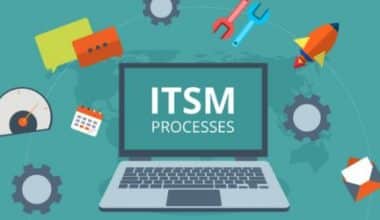Management control systems are essential for every organization and its growth. You may be wondering why your business seems to be lacking with its underway projects. While this could result from a lack of historical data and estimation error, it can also be due to not using the management control systems for your projects. Managing various tasks properly in an organization will most likely result in the success of any project. Now, what do we mean by management control systems, project control systems, and inventory control systems?
Management control systems are essential for large and small-scale businesses, which is why in this article, we will be providing more insight into management control systems, project control systems, and inventory control systems and all of their features, types, and examples.
Management Control Systems
A management control system (MCS) is a means to have a clearer view of how to visualize and manage the resources of a project.
This means a way of controlling and planning a business so it can yield more profitability. A management control system will help predict and manage the activities of a project till they get the results needed.
A Management control system works as an instrument that helps managers to oversee how others are maintaining resources and capital. Also, organizations can utilize management control systems for smaller or more significant projects in various departments.
There are several reasons businesses use management control systems for their projects, and one of them is the ability to receive accurate feedback from the control system. The reports will mostly point out the areas lacking in the project. This will enable you to fix any issue that may threaten the project.
What is meant by management control systems?
A management control system can help managers compare and measure a strategy’s functions and the goals of a project. Even when a project’s initial result is negative, management control systems can point out the obstacles and provide more insight on dealing with such a situation.
Management control systems can be used for profit or nonprofit projects.
What Are the Types of Management Control Systems?
Management control systems are of various types. Here are the types of management control systems:
#1. Behavioral controls
Behavioral controls in the management control system oversee the model that keeps the department’s team in check. It is usually about the actions that will achieve each department member’s goals and aims. When team members set a goal with the right attitude toward the project, it guarantees a successful outcome.
#2. Planning controls
Planning is essential in every form of business, whether large or small-scale. In this management control system, employees in each department should plan for every project and task. Planning will help accomplish the goals and objectives of the organization.
#3. Close-end management controls
In management control systems, close-end controls signify the continuity of well-structured details through projects. With each task being compared and evaluated, the manager can decide how to fix any arising obstacles.
#4. Financial controls
Financial control is essential for any organization, project, and task. The managers in charge of the department/project will be responsible for this type of control. However, managers are not the only individual responsible for financial controls; other heads of departments and even the CEO/CFO are responsible.
#5. Regulative and normative controls
Regulative and normative controls are crucial for organizations. It embodies the actual policies and procedures an organization should follow. Regulative controls are the quality and financial controls of the organization.
#6. Bureaucratic Controls:
Every organization needs bureaucratic controls. These are the principles, rules, and objectives that improve an organization. In this setting, one individual in the company has higher control of authority to set principles, procedures, and policies.
#7. Quality controls:
Quality control is crucial for the project, whether the business is large or small. It guarantees the services of an organization are above the standards. Most companies use quality controls to help enhance every aspect of their products and services.
What Are the Four Elements of a Management Control System?
Management control systems have various elements, but here is a list of the 4 significant elements of management control systems:
#1. Planning
Planning is one of the elements of management control systems. It deals with identifying and listing the objectives that can help achieve the desired results in a project. Planning involves defining an organization’s mission, objectives, vision, and goals.
#2. Scope and standards
The scope and establishment of standards should be well-defined in a business organization. The scope should be set on time, the project and the budget.
Establishing standards is highly important for the growth of any organization.
When business standards are in the correct order, the business’s performance, success, and standards will be appropriately managed.
Scope and standards help to evaluate the goals, vision, objectives, and missions of the organization
#3. Risk Management:
Management control systems involve risk management. An organization should carefully monitor and evaluate the efficiency of all departments. Doing this will help identify where each department is lacking. And also help them create a strategic long-lasting solution. Identifying the risks involved in a project is a one-way ticket to achieving the goals set.
#4. Monitoring and evaluating performance:
Monitoring and evaluating work performance is essential for every organization. So, monitoring the activities of each department in an organization will enable you as the manager to take crucial steps and provide solutions that will help with the growth of the dept.
What Is an Example of Management Control?
As said earlier, a Management control system works as an instrument used to oversee how resources and capital are managed in an organization. But what is an example of management control?
An example of management control is:
#1. Automation:
Automation is an example of management control, and it can be used to monitor the activities of a business.
#2. Change Control:
Change control is essential for every business organization. It involves evaluating, reviewing, and implementing change in a business. Understanding when a business needs change is one of the most potent tools in management control.
#3. Data Management
Data management is necessary for any organization and is an example of management control. Knowing when to protect the company’s data and security is vital.
#4. Financial Control
This is another example of management control. With financial control, a business organization will have a clearer view of how to manage its finances.
Other Examples of Management Control
- Metrics An Reporting
- Monitoring Cost Budgets
- Performance Management
- Quality Assurance
- Risk Control
- Schedule Management
- Security Control
- Strategic Planning
What Are the Features of a Management Control System?
Here are a few features of the management control system:
#1. Continuous Process:
One of the features of a management control system is a continuous process. Management control is a repetitive and continuous process that flows with every new undertaking. To achieve better results, a dynamic process must be in place.
#2. Managerial Function:
Managerial function is another feature of management control systems. As a manager or head of a department, you must be aware of your functions to achieve the desired results. A managerial function includes planning, risk management, quality control, and resource management.
#3. Mechanism:
Similarly to managerial function, a mechanism is a feature of management control that evaluates the performance of projects and employees.
With the management control in check, it will be easier for the manager to know what and who is lacking behind in a project.
#4. Action-Oriented:
This management control feature deals with all types of organizational tasks and employees. Directly or indirectly, managers are meant to control employees’ attitudes toward their job. When an employee seems nonchalant toward the task, it is the manager’s responsibility to keep such a worker in control.
#5. Forward-Looking:
A manager should always be conscious of the future of the organization, department, or project.
While it is crucial always to check past mistakes and understand why the first project did not succeed, it is also crucial to utilize past experiences to achieve better future outcomes.
Why Do Companies Have MCS?
You may wonder why companies have management control systems for all their activities.
However, here are a few reasons why companies have MCS:
#1. To Keep project management on schedule:
A management control system keeps project management on schedule. Most companies use management control to keep track of tasks and employees.
#2. To Detect error:
Management control helps detect errors and issues in a project. They also help detect the underlining errors that can obstruct the success of a project.
#3. For Efficient use of resources:
Organizations use management control as a tool to help with the efficient use of resources. Resource control is an essential feature of management control.
#4. For an Efficient control system:
Companies have a management control system for general efficient control of all areas in the organization.
Project Management Control Systems
Project management control systems (PMCS) are data management, data analysis, and data gathering procedures that can be used to estimate the actual time and cost of a project in an organization.
It is a means of tracking schedules and project costs through details in formats.
This is beneficiary to organizations with small or multiple projects because you can easily predict the most likely result of each project.
Project management control systems work on the primary project timelines, overseeing project costs, forecasting, performance management, creating risk management objectives, budgeting, project planning, and identifying and aligning projects with the company’s goals, mission, vision, and objective.
Inventory Management Control Systems
Inventory management control systems (IMCS) are tools that help keep track of the goods and the number of available goods. So, inventory management control is not limited to stocks and numbers; it deals with every aspect of an organization’s inventory, including shipping, receiving, buying, shortage of stocks, overstocks, reordering, turnovers, and more.
Generally, inventory management control has various types, which are:
#1. Periodic inventory systems:
Periodic inventory systems assists organizations with numbering inventories annually and quarterly. A periodic inventory system does not count inventories on a daily. They track and count inventory with accurate counts and also manage balances in the purchases account changes into the inventory accounts. It starts its count from the last inventory and rotates them into the beginning of the new ones.
#2. Perpetual inventory systems
A periodic inventory system is a monthly inventory count. It keeps track of manual counts at the beginning of each month.
This is one of the most used inventory systems in most organizations.
#3. Barcode Inventory Systems
Barcode inventory systems are more like daily inventory counting. It keeps track of inventory immediately when an employee scans them and also keeps track of purchase orders, product details, reports, location, histories of the product, and sales of the product.
Conclusion
Management control systems are ideal for all business types. They can help with the day’s activities, tasks, or projects. It also assists managers with ways to manage the conduct of the organization and department. We hope this overview is helpful to your search for management control systems, project control systems, and inventory control systems.
Management Control Systems FAQs
Can small-scale companies use a management control system?
Yes, small companies can utilize a management control system with their day-to-day activities and project.
Can project control management effectively manage a project?
Yes. With the features linked with project control management. You can predict the outcome of your projects.
Which is the best type of inventory control system?
The best inventory control system is the one that helps with day-to-day reporting. Barcode scanning is suitable for all business types.
Related Articles
- INTERNAL CONTROLS: Meaning and Examples
- CAPITAL CONTROLS: BEST PRACTICES WITH PRACTICAL EXAMPLES
- Best 15+ INVENTORY SYSTEMS FOR SMALL BUSINESS in 2023 (+ Free Options)
- Financial Audit: All you need, Simplified!! (+ Detailed pdf)
- Risk Management Strategies: 5+ Strategies You Can Follow Now!!!






